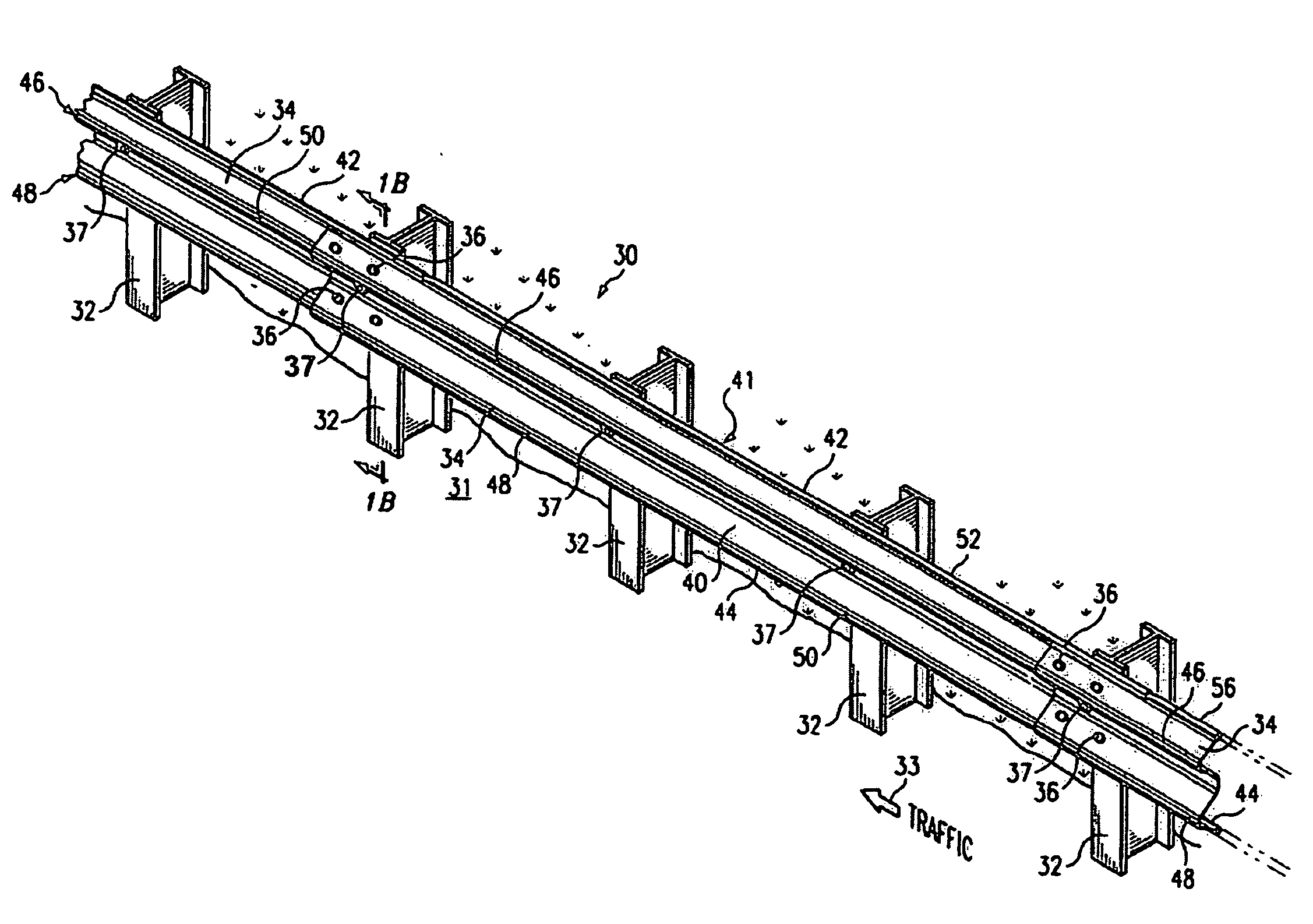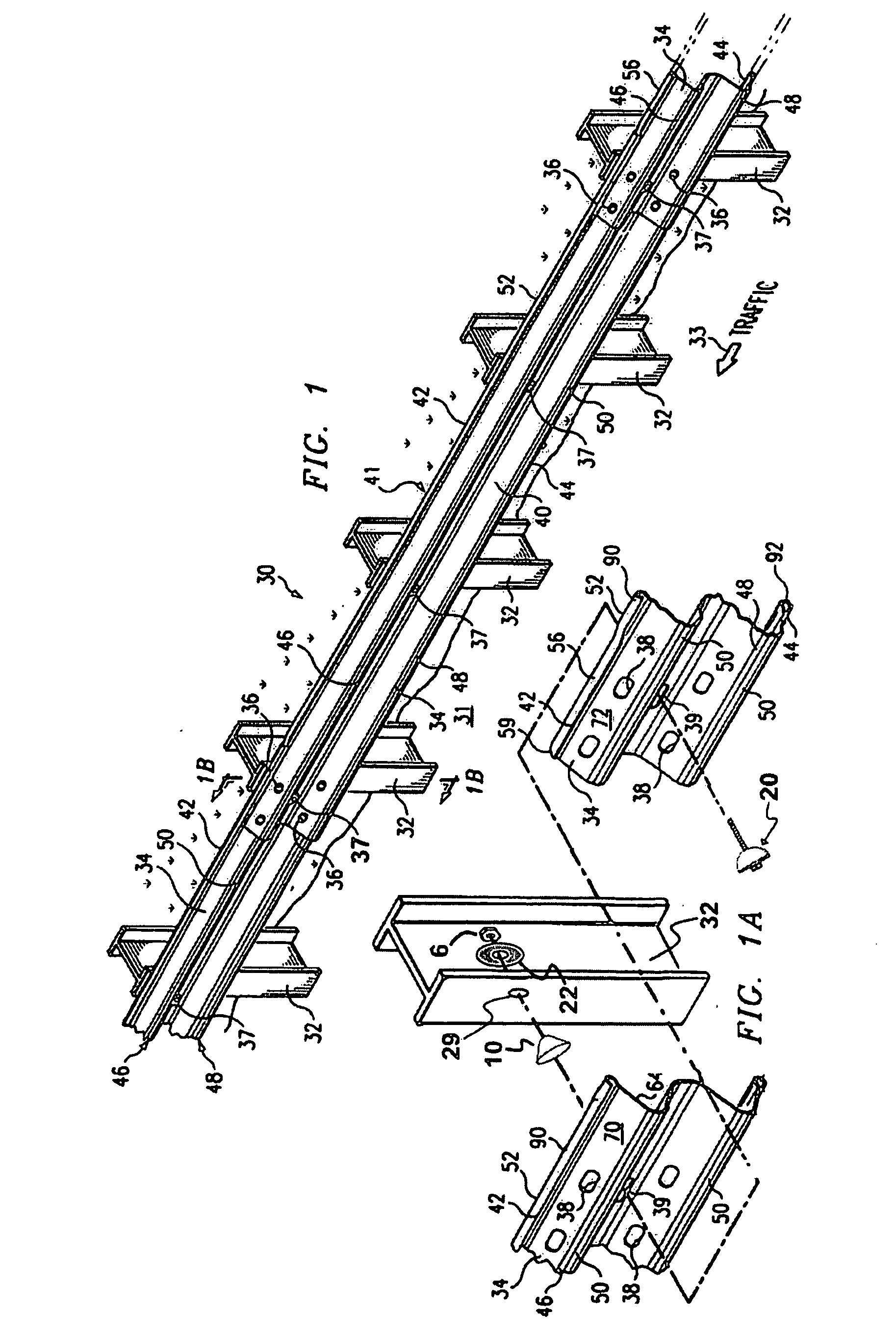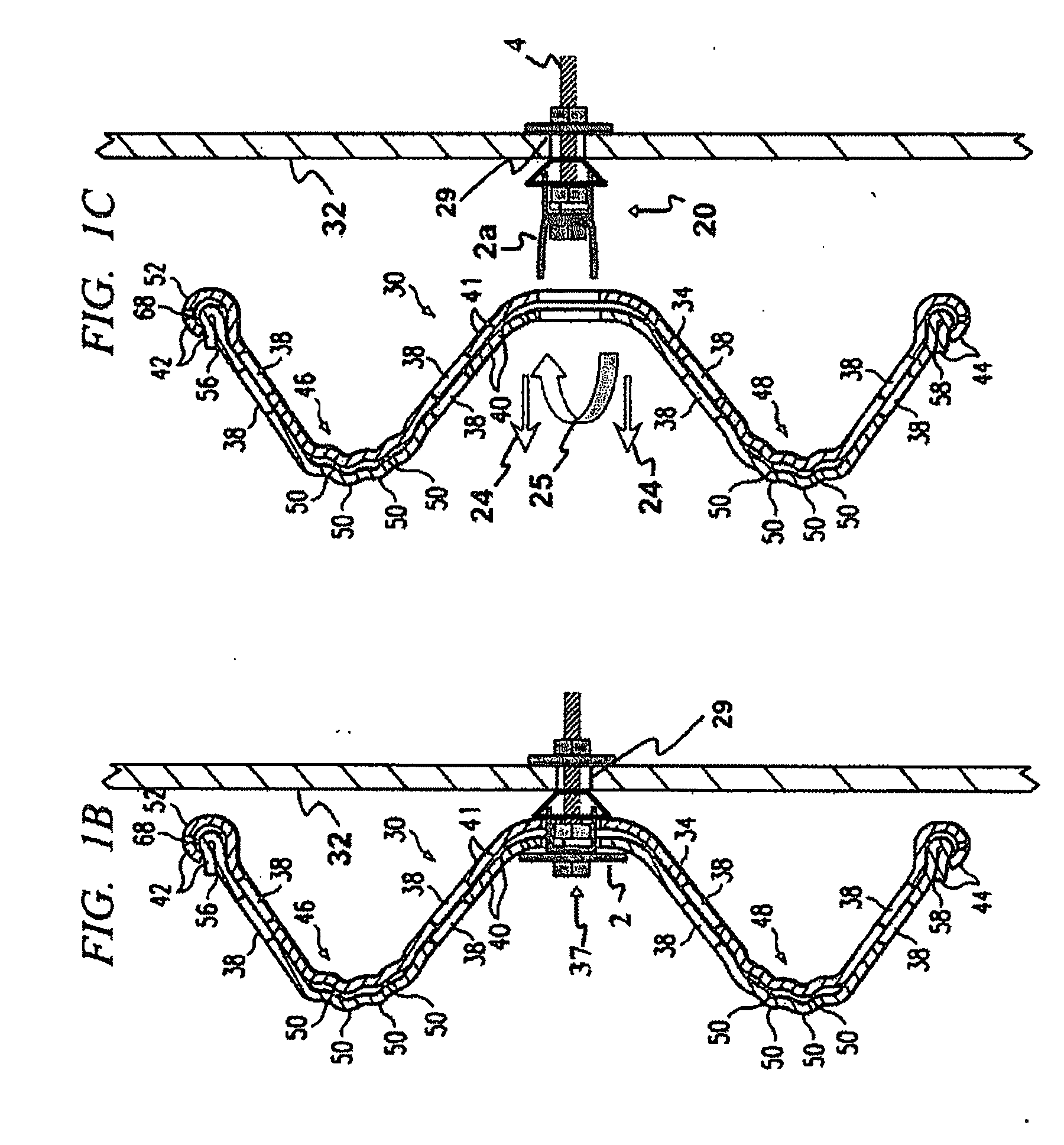Posts and release mechanism for highway safety structures
a technology of highway safety and release mechanism, which is applied in the direction of roadway safety arrangements, construction, and roads, can solve the problems of affecting the driver's efforts to control the vehicle, errant vehicles may struggle with the guardrail system in various ways, and significant suspension damage or occupant compartment deformation may also occur to the vehicle, so as to reduce the variation of release force, increase system complexity, cost and installation time, and achieve safety goals more effectively.
- Summary
- Abstract
- Description
- Claims
- Application Information
AI Technical Summary
Benefits of technology
Problems solved by technology
Method used
Image
Examples
Embodiment Construction
[0052] Preferred embodiments of the present invention and various advantages related to the improved management of guardrail system loads are best understood by referring now in more detail to the figures in which like numerals refer to like parts.
[0053] Consider the following example of relatively poor load management in guardrail systems of the prior art. In present strong post W-beam guardrail systems having “blockouts” or “blocks” to offset the guardrail from the post, the reality has been that one of several release modes, or their various combinations, may actually cause release, depending upon a random combination of various extraneous variables that are also not well controlled during release. Thus, unregulated release mechanism variables govern how the blockout triggers release via the pull-through of the post bolt head through the face of the guardrail at a post bolt slot. These variables may combine, interact, and compound, to create a general lack of consistency. To mak...
PUM
 Login to View More
Login to View More Abstract
Description
Claims
Application Information
 Login to View More
Login to View More - R&D
- Intellectual Property
- Life Sciences
- Materials
- Tech Scout
- Unparalleled Data Quality
- Higher Quality Content
- 60% Fewer Hallucinations
Browse by: Latest US Patents, China's latest patents, Technical Efficacy Thesaurus, Application Domain, Technology Topic, Popular Technical Reports.
© 2025 PatSnap. All rights reserved.Legal|Privacy policy|Modern Slavery Act Transparency Statement|Sitemap|About US| Contact US: help@patsnap.com



